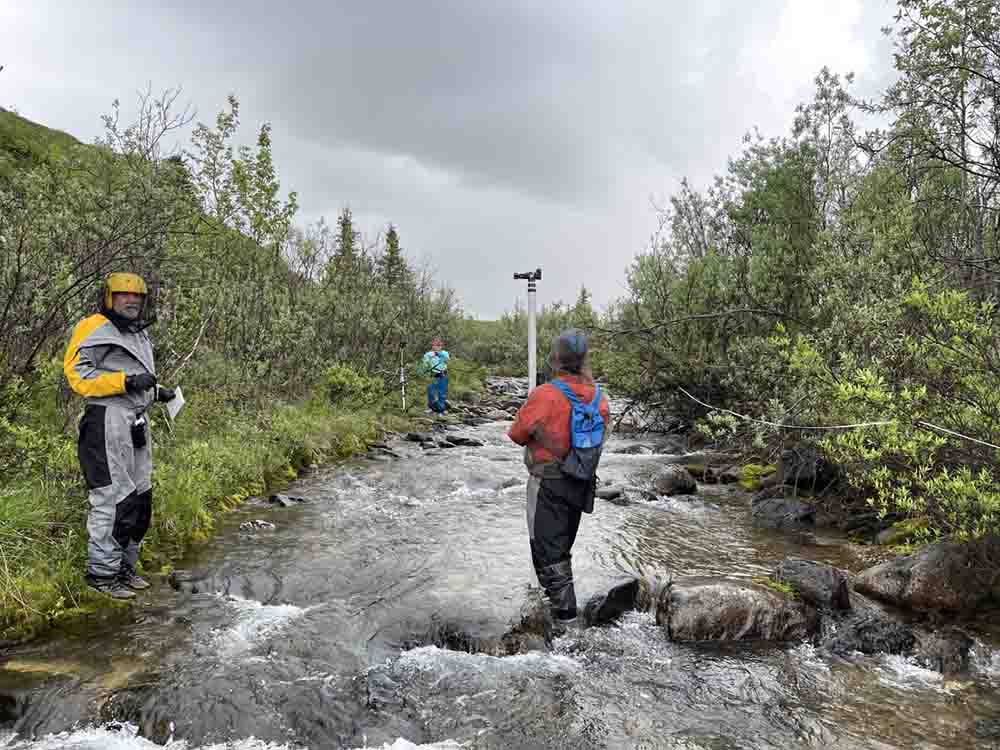News Release

News Release Date: June 23, 2021
Contact: Trey Simmons
A Stream Quantification Tool (SQT) was recently adopted for use in wadeable streams in non-glacial valleys in Interior Alaska. The tool is specific to Alaska and offers a way to quantify changes in stream condition due to either harmful impacts or restoration. Based on standard measurements, it calculates the degree to which a stream may be improving in function (getting healthier) due to mitigation or restoration efforts or losing ecological function (a loss of health or an impaired condition) due to various impacts. The assessment looks at five functional areas: hydrology, hydraulics, geomorphology, physicochemistry, and biology. Streams are assessed at different periods of time, for example, before and after some action (either development or restoration) so that a loss or gain in function can be quantified. By using this standard method and tool, results are objective, verifiable, and repeatable across Interior Alaska.
Over the last 18 months, a steering committee that included scientists from several state and federal agencies, including the National Park Service, worked to develop the SQT. The effort relied on input from a number of technical work groups, strong engagement from other state and federal agencies, and support from the Salcha-Delta Soil and Water Conservation District and staff from Stream Mechanics and Ecosystem Planning and Restoration.
As part of this effort, the National Park Service Central Alaska Network worked with scientists at the Bureau of Land Management National Aquatic Monitoring Center and Utah State University to develop the biological assessment tools required to implement the SQT in Interior Alaska.
The National Park Service will use the Alaska Interior SQT as part of a three-year project to evaluate the current condition and restoration potential of historically mined streams in Denali National Park and Preserve, Wrangell-St. Elias National Park and Preserve, and Yukon-Charley Rivers National Preserve. This information will then be used to prioritize stream restoration projects in these three parks.
The SQT approach is currently being used as part of compensatory stream mitigation programs in Tennessee, Wyoming, Colorado, Georgia, Michigan and Minnesota, and is scheduled for development in South Carolina. Practitioners in North Carolina and other states use the SQT to assist in prioritizing sites for restoration and to show the functional benefits of stream restoration activities. Now that an Alaska Interior SQT has been developed, the Alaska District of the U.S. Army Corps of Engineers is working on protocols for how they might incorporate it into the permitting process in Alaska.
Learn more:
Last updated: June 30, 2021
